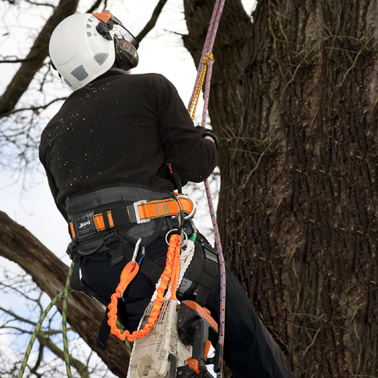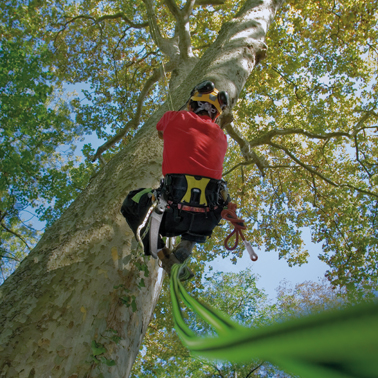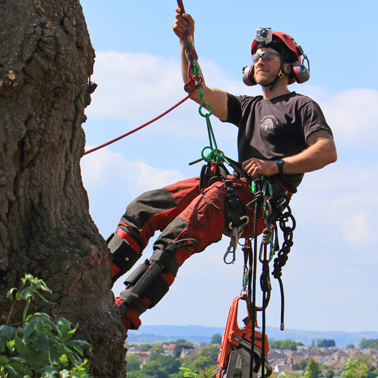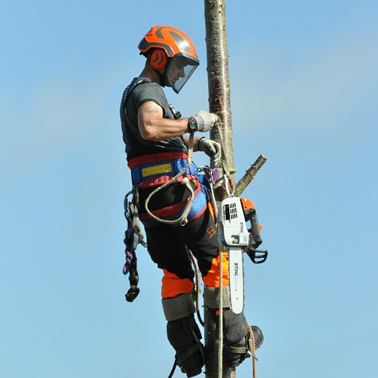
A Guide to Buying a New Arborist Climbing Harness
Your harness is one of the most integral and vital parts of your daily work kit. A harness provides you with safety, security and facilitates the performance of many important functions within your daily job role. Ultimately, a harness will have a greater effect both over your capability to do your job, and how comfortable you are doing it, more than any other piece of gear you may use.
Luckily, harnesses have evolved tremendously since the days that climbers had to create a harness out of the end of their climbing line with only an additional board for a seat, and now there is an expansive market for harnesses that not only meet stringent safety standards but are designed for the comfort of the wearer with a range of specific on-the-job functionalities. With such a range of tree climbing harnesses at your fingertips, now more than ever you can find the harness that is right for your particular style.
With the range of risks inherent in working at heights, and the influence that a harness can have over the way you work, choosing one, whether it’s your first or your fifth, should be treated as an important decision.
So what factors should you consider before heading into the market to replace ye old faithful?
Whilst cost may be one of the first aspects that come to mind, selecting a harness that suits your personal build, centre of gravity, and work style should be the overriding factor. A harness has a working life of up to five years, which means a good or bad decision is potentially going to be with you for a long time.
We’ve gone through and assessed the main criteria you should be considering when picking out a new harness.

What You Should Look for When Buying an Arborist Climbing Harness
The Two Types Of Harness
All harnesses are made with certain intended applications, and should only be used for their intended purpose. Whilst the work positioning harness is the type most commonly used by arborists, there is also a fall arrest harness that you may come across and require at some point in your career.
Fall Arrest or Fall Restraint Harnesses
This type of harness is intended for use where the user can be anchored to a securely fixed point such as a structure or platform but is not designed for climbing a tree. It is always used in conjunction with a lanyard – either a restraint lanyard (creating a fall restraint system) or a fall arrest lanyard (creating a fall arrest system).
Where this type of harness is utilised in arboriculture, for example when working from a MEWP (mobile elevated work platform, or ‘cherry picker’), it would be used with a restraint lanyard, as seen in the Titan or Duraflex Restraint Kits. The lanyard should be short enough to prevent the user climbing out the basket, hence the name ‘restraint’ – the user should never get into a position where they could fall. This is a full body harness with the attachment point for the lanyard always being on the upper body.
Work Positioning or Suspension Harnesses
This system gives the worker exactly what the name implies, the mobility to position and re-position themselves safely and correctly whilst moving around the tree. Cradling the user in an upright and stable semi-seated position from an overhead tie-in point, the harness allows the climber free use of both hands.
A work positioning harness for arboriculture should meet EN358 and EN813.

The Edelrid Tree Core Harness comes with comfortable back padding around the waist to cushion the balance of weight around the body.
The TreeMOTION harness is one of the most popular harnesses on the market and a prime example of a modern suspension harness. The easy adjustment of the suspension system improves the load distribution to hips and legs and the forward suspension ensures the system is constantly in motion in accord with the body movements of the climber, ensuring that the climber is both flexible and comfortable.
How It Fits on the Legs
Although most tree harnesses can fit into two typical categories, listed below, there is still a large amount of variety in the leg position options within those. How your harness fits depends very much on your personal build, so where possible, it’s good to try before you buy. If you can, borrow a friend’s harness after work or go to an arborist store with a tie in point to check the fit. Although there’s a lot of scope for adjustment in modern harnesses, one size doesn’t necessarily suit all!
The two categories that tree industry harnesses fit into are sit harnesses or leg loop harnesses.
Sit harnesses, like the Willans, primarily bear the weight of the climber on a strap beneath their buttocks, which is supplemented by leg straps, however, these are only to ensure correct positioning, not to support the climber’s weight. In a sit harness with a rigid central strap like the Dragonfly harness, it can feel as comfortable as if you are sat in a swing and provides a large amount of support to the user. If a sit harness has a soft seat, it can push your hips and legs together and constrict movement, especially over longer periods of suspension.

Harnesses with individual leg straps, like the Bolt Orion harness, take the majority of the climber’s weight on the padded leg straps and offer a huge amount of adjustment around the legs, allowing a greater freedom of movement. If not adjusted properly they can bind and pinch, but a well-fitted leg loop harness should be very comfortable and is the most popular type of harness for arboriculture.
Both types of harness have specific benefits for particular applications: a leg loop harness will often be more comfortable if a lot of canopy movement is necessary, and allows better mobility. A sit harness is good if you’ll be hanging free for an extended period of time, and is sometimes preferred by bigger built climbers due to the additional support.
Central Attachment
Central attachment options can be divided into two types, sliding or fixed. By far the most common – and generally preferred – type is a sliding ring which gives the climber more lateral freedom, easing the amount of torque on a climber’s hips or back by adjusting to their movement.
A fixed ‘D’ or ring is sometimes preferred by new climbers as it can feel more secure.
Most harnesses allow the option for or come with, more than one ‘D’ or ring to allow multiple connections.
Gear Attachment Points
A harness should fit seamlessly into your working practice, which is why considering the placement of the gear attachment points on your harness is so important.
Modern harnesses will often specify where certain tools should be hung, with loops intended to only bear certain weights. The TreeMOTION harness has colour coded ring system to distinguish between PPE attachment points, such as lanyards, and gear loops, and harnesses like the Bolt, have a specific holster for a first aid kit.
You may want to consider the set-up of a prospective harness before you buy, as the placement of gear such as your chainsaw could either hinder or better facilitate, the way you work. For instance, a left chainsaw attachment may be more compatible with your current working style.
Cost
In an ideal world, the cost wouldn’t be a factor in your decision making, however, the price of premium harnesses can be a big outlay for a one time purchase. However, if properly used and cared for, a good harness can last a climber up to five years. Viewing the harness as a long time investment into your comfort, safety and security will make handing over the cash a little easier!
Realistically, you’re going to be relying on your harness every day to protect and help you in pursuit of your livelihood and given its importance, taking time in choosing the right harness for you will be worth it for the comfort, safety and efficiency you’ll gain in return.
